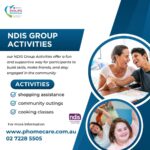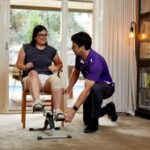Top Speech Therapy Techniques for Children with Autism
Speech therapy plays a vital role in helping children with autism improve their communication skills, enabling them to express their thoughts, needs, and emotions effectively. For children with autism, speech difficulties can range from challenges with articulation, language development, social communication, and pragmatic language. However, with the right techniques and strategies, speech therapy can significantly enhance their ability to communicate. One of the essential approaches in this area is NDIS speech therapy, which is tailored to the needs of children under the National Disability Insurance Scheme (NDIS) in Australia.
1. Picture Exchange Communication System (PECS):PECS is one of the most popular and effective techniques used in speech therapy for children with autism. It involves using pictures to help children communicate their needs and desires. The child learns to exchange a picture of an item or activity for the actual object or activity. Over time, children progress to building sentences with these pictures, ultimately improving their expressive communication skills.
2. Augmentative and Alternative Communication (AAC):AAC systems can be highly beneficial for children who are non-verbal or have limited verbal communication. These tools, which can be electronic or non-electronic, help children communicate through symbols, gestures, or speech-generating devices. NDIS speech therapy may incorporate AAC to support non-verbal children, helping them express themselves more effectively and reducing frustration.
3. Social Stories:Social stories are personalized, short narratives that describe social situations and appropriate responses. These stories provide clear guidance on how to navigate different social interactions and can help children with autism understand complex social norms. Social stories can enhance pragmatic language skills, making it easier for children to engage in conversations with others.
4. Naturalistic Teaching Strategies:This technique focuses on teaching communication skills in real-life contexts, such as during play or daily routines. By integrating speech therapy into everyday activities, children can practice communication in meaningful ways. NDIS speech therapy often emphasizes this approach to promote functional communication in natural environments.
5. Speech and Language Modeling:Modeling involves the therapist or caregiver demonstrating appropriate speech patterns, vocabulary, and sentence structures. By listening to these models, children learn how to imitate and use new words and phrases. This technique helps children expand their vocabulary and improve their sentence structure, aiding overall language development.
6. Functional Communication Training (FCT):FCT is an essential technique used to replace challenging behaviors with appropriate communication methods. For children with autism, it can be frustrating when they cannot communicate their needs. FCT teaches them to use words, signs, or other communication methods to express desires, reducing the occurrence of behavioral issues.
Incorporating NDIS speech therapy strategies like these can help children with autism gain essential communication skills, improving their ability to interact with others and participate in social situations. Whether it’s through visual aids like PECS, electronic AAC systems, or real-world social interactions, speech therapy offers a wide range of tools to help children with autism thrive
Learn More: https://www.adhealthcare.com.au/our-services/ndis-speech-therapy/






































































